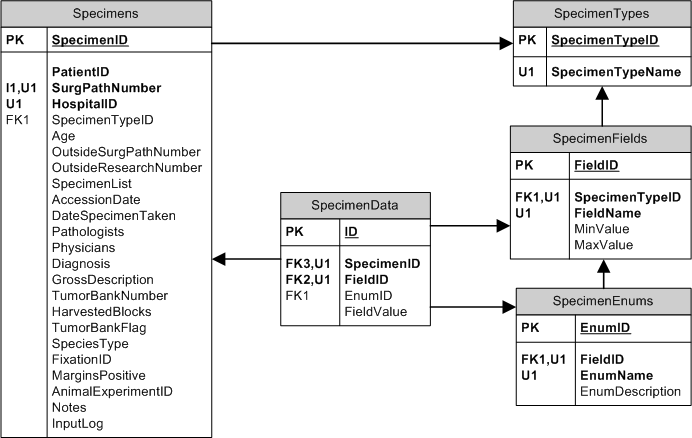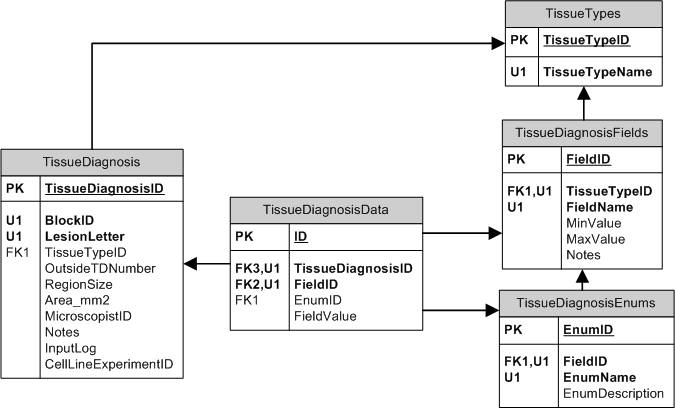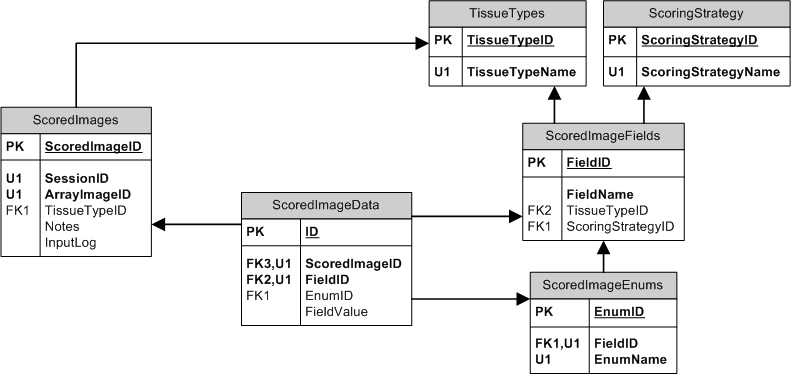Specimens Dynamic
Structure. The fields common for every specimen are seen in the Specimens table. For example,
the SurgPathNumber and PatientID are fields we would want to know for
every specimen, no matter what the SpecimenType
is. Notice the SpecimenTypeID field in the table Specimens.
It is important that every Specimen is assigned a
SpecimenTypeID.
Depending on the specimenType selected, different specimenFields will be
presented. Optionally, the fields may be enumerated (SpecimenEnums Table). The SpecimenData table holds the
dynamic-data. For the values that are typed-in (not enumerated), FieldValue is used in
SpecimenData. If the data is enumerated, then EnumID is used.
The Meta Data in this diagram is shown by 3 tables: SpecimenTypes,
SpecimenFieldNames, and SpecimenEnums. Each SpecimenType may have
many SpecimenFieldNames, and each SpecimenFieldName may have many
SpecimenEnumerations. This illistrates the hierarchy of the
Meta Data in TMAJ
Type ---> Field
---> Enumeration
|


